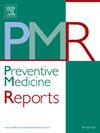促进人乳头瘤病毒疫苗接种的家长提醒召回信的评价。
IF 2.4
3区 医学
Q2 PUBLIC, ENVIRONMENTAL & OCCUPATIONAL HEALTH
引用次数: 0
摘要
目的:人乳头瘤病毒(HPV)疫苗的摄取仍然不够理想。我们的楔步聚类随机试验发现,与常规护理相比,向适龄儿童的父母发送提醒召回信显著增加了疫苗的吸收率。随后,我们进行了流程评估,以评估信函有效性的机制。这项研究评估了谁记住了这封信,所提供的资源的使用,以及儿童的疫苗接种状况。方法:这项横断面评估包括来自6个初级保健诊所的11-12岁青少年父母(n = 1165)的数据,这些父母收到了关于其孩子HPV疫苗接种状况的信件。从2018年到2022年,父母们收到了提醒召回信,然后在收到信的12-15个月后发送了问卷。问卷询问父母是否记得这封信,他们的孩子是否接种了疫苗,如果没有,不接种疫苗的原因,以及对HPV疫苗接种的态度和信念。结果:1991份问卷共完成1165份(59%)。超过一半(58%)的人记得这封提醒召回信。与那些不记得这封信的人相比,那些记得这封信的人更有可能让他们的孩子接种疫苗(56%对44%,p)结论:提醒召回信提示大多数父母完成HPV疫苗接种;然而,对疫苗的误解仍然是一个挑战,这表明需要制定更多的宣传战略。本文章由计算机程序翻译,如有差异,请以英文原文为准。
Evaluation of parent reminder-recall letters to promote human papillomavirus vaccination
Objective
Human papillomavirus (HPV) vaccine uptake remains suboptimal. Our stepped-wedge cluster randomized trial found that reminder-recall letters sent to parents of age-eligible children significantly increased vaccine uptake compared to usual care. Subsequently, we conducted a process evaluation to assess the mechanisms of the letter's effectiveness. This study evaluated who remembered the letter, use of provided resources, and child vaccination status.
Methods
This cross-sectional evaluation included data from parents (n = 1165) of adolescents ages 11–12 from six primary care practices who received letters about their child's HPV vaccination status. From 2018 to 2022, parents were mailed reminder-recall letters and then sent questionnaires 12–15 months after receiving the letter. Questionnaires asked if parents recalled the letter, whether their child received a vaccination and, if not, reasons for not vaccinating, and attitudes and beliefs about HPV vaccination.
Results
A total of 1165 of 1991 questionnaires were completed (59 %). Over half (58 %) remembered the reminder-recall letter. Compared to those not remembering the letter, those who did were significantly more likely to have had their child vaccinated (56 % versus 44 %, p < 0.05). Of those who remembered the letter but did not vaccinate, the majority reported misperceptions about their child being too young (26 %) or concerns about vaccine safety (20 %). Of those who did not remember the letter and did not vaccinate, the primary reason was not knowing the child was due for vaccination (27 %).
Conclusions
Reminder-recall letters cued the majority of parents to complete HPV vaccination; however, vaccine misperceptions remain a challenge, indicating the need for additional communication strategies.
求助全文
通过发布文献求助,成功后即可免费获取论文全文。
去求助
来源期刊

Preventive Medicine Reports
Medicine-Public Health, Environmental and Occupational Health
CiteScore
3.90
自引率
0.00%
发文量
353
 求助内容:
求助内容: 应助结果提醒方式:
应助结果提醒方式:


